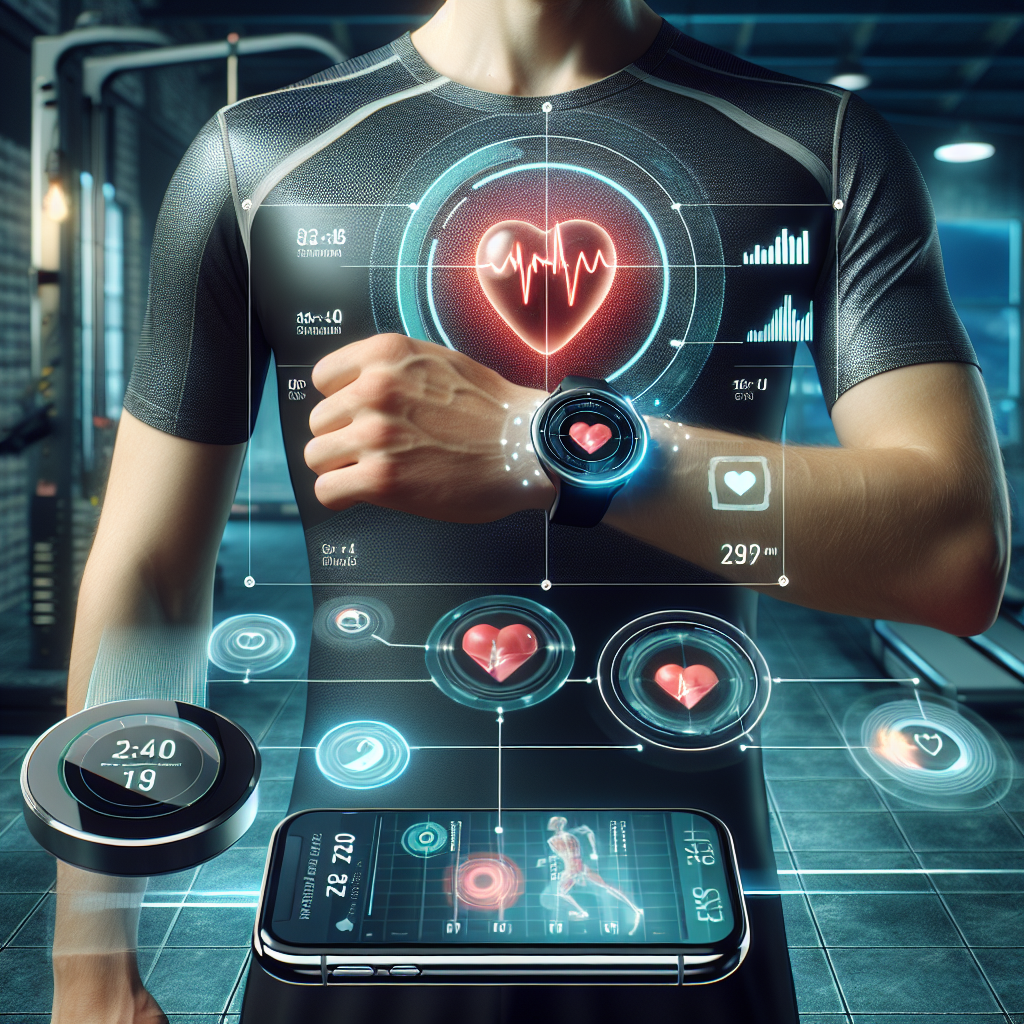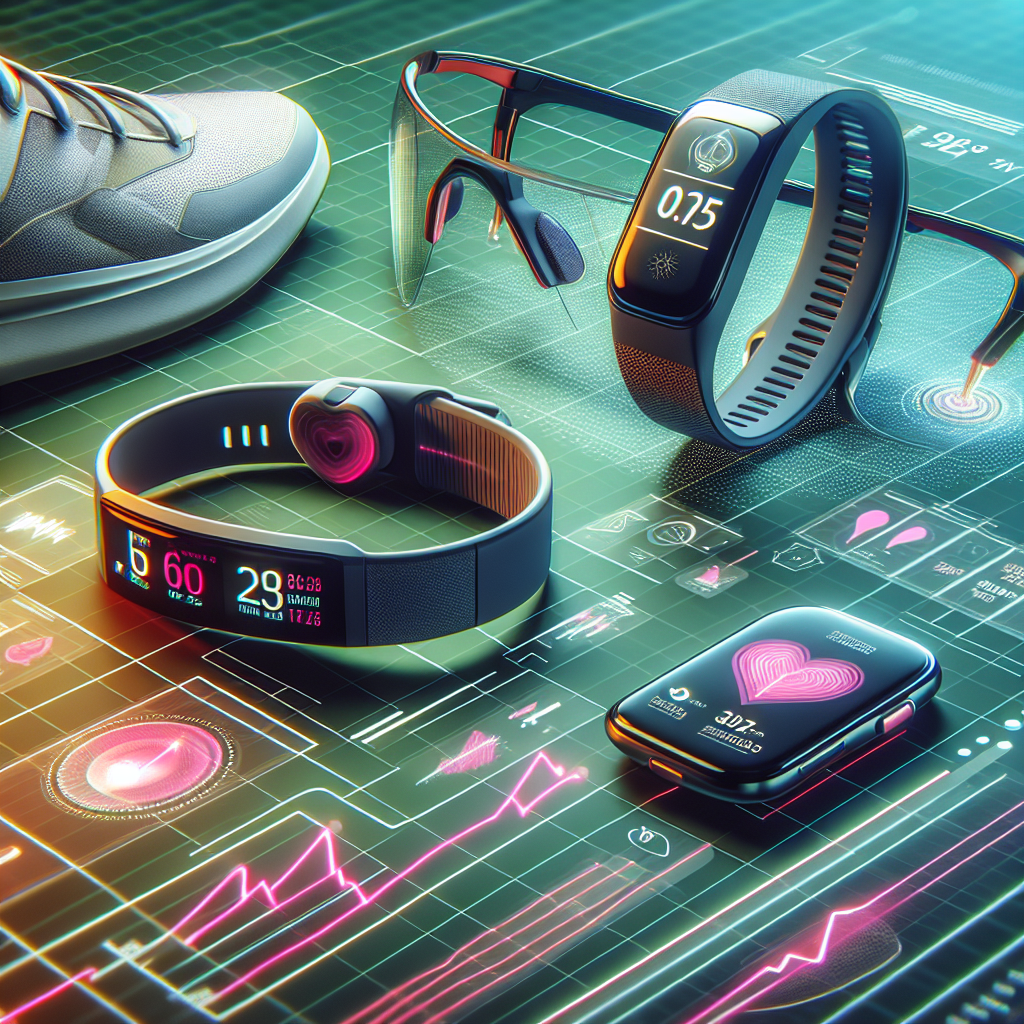Using Wearable Tech for Health Monitoring

Start taking control of your health today with wearable tech for health monitoring. Monitor your heart rate, sleep patterns, and more with the latest technology. Visit www.myvibrantvitality.com to learn more and start your journey towards a healthier lifestyle.
Maximizing the Benefits of Wearable Tech for Health Monitoring
Wearable technology has revolutionized the way we monitor our health. From tracking our heart rate to counting the number of steps we take each day, these devices provide us with a wealth of information about our physical well-being. However, to truly maximize the benefits of wearable tech for health monitoring, it’s essential to understand how to use these devices effectively and interpret the data they provide.
Firstly, it’s important to remember that wearable tech is not a substitute for professional medical advice. While these devices can provide valuable insights into our health, they should be used as a supplement to regular check-ups with a healthcare provider. For instance, a fitness tracker might alert you to an unusually high heart rate, but only a medical professional can diagnose the cause of this symptom.
Moreover, it’s crucial to use wearable tech consistently. These devices gather data over time, allowing you to track trends and changes in your health. For example, a sleep tracker can help you identify patterns in your sleep cycle, such as periods of restlessness or wakefulness. However, to get an accurate picture of your sleep health, you need to wear the device every night. Similarly, a fitness tracker can help you monitor your physical activity levels, but you need to wear it consistently to get a comprehensive view of your exercise habits.
In addition, it’s essential to understand the limitations of wearable tech. While these devices can provide a wealth of data, they are not always 100% accurate. For example, a heart rate monitor might not be as precise as a medical-grade device. Therefore, it’s important to take the data provided by wearable tech with a grain of salt and consult a healthcare provider if you have any concerns about your health.
Furthermore, it’s important to protect your privacy when using wearable tech. These devices collect a lot of personal data, which could be vulnerable to hacking or misuse. Therefore, it’s crucial to use strong, unique passwords for your devices and their associated apps, and to regularly update your devices to ensure they have the latest security patches.
Lastly, it’s important to make the most of the data provided by your wearable tech. Many devices come with associated apps that can help you analyze and interpret your health data. For example, a fitness tracker app might provide insights into your exercise habits, such as the best time of day for you to work out, or how your physical activity levels compare to others in your age group. By taking the time to understand this data, you can make informed decisions about your health and lifestyle.
In conclusion, wearable tech offers a wealth of opportunities for health monitoring. However, to truly maximize the benefits of these devices, it’s important to use them consistently, understand their limitations, protect your privacy, and make the most of the data they provide. By doing so, you can gain valuable insights into your health and make informed decisions about your lifestyle.
Exploring the Future of Health Monitoring with Wearable Tech

The advent of wearable technology has revolutionized the way we monitor our health. These devices, which are often worn like a wristwatch or incorporated into clothing, have the potential to transform healthcare by providing real-time, personalized health data. This article explores the future of health monitoring with wearable tech, focusing on its potential benefits, challenges, and implications for healthcare.
Wearable tech for health monitoring is not a new concept. However, recent advancements in technology have made these devices more accurate, reliable, and user-friendly. Today, wearable tech can monitor a wide range of health metrics, including heart rate, blood pressure, sleep patterns, and physical activity levels. Some devices can even monitor glucose levels, making them invaluable tools for people with diabetes.
The primary benefit of wearable tech for health monitoring is its ability to provide real-time, personalized health data. This data can help individuals better understand their health and make informed decisions about their lifestyle and treatment options. For example, a person with a heart condition can use a wearable device to monitor their heart rate and activity levels, helping them avoid activities that could trigger a heart attack.
Moreover, wearable tech can also facilitate remote patient monitoring, which is particularly beneficial for patients with chronic conditions or those living in remote areas. Doctors can access the patient’s health data remotely, allowing them to monitor the patient’s condition and adjust treatment plans accordingly. This not only improves patient outcomes but also reduces healthcare costs by minimizing hospital visits and readmissions.
Despite these benefits, there are also challenges associated with using wearable tech for health monitoring. One of the main challenges is ensuring the accuracy and reliability of the data collected by these devices. While most wearable devices are reasonably accurate, they are not infallible. Factors such as device placement, user behavior, and technical glitches can affect the accuracy of the data.
Another challenge is ensuring the privacy and security of the health data collected by wearable devices. These devices collect a wealth of sensitive health data, which could be a target for cybercriminals. Therefore, manufacturers must implement robust security measures to protect this data and ensure user privacy.
Looking ahead, the future of health monitoring with wearable tech is promising. As technology continues to advance, we can expect to see more sophisticated wearable devices capable of monitoring a wider range of health metrics. These devices will not only provide more accurate and comprehensive health data but also offer personalized health advice based on this data.
Furthermore, the integration of artificial intelligence (AI) and machine learning technologies could further enhance the capabilities of wearable tech. These technologies could enable wearable devices to predict potential health issues based on patterns in the user’s health data, allowing for early intervention and prevention.
In conclusion, wearable tech has the potential to revolutionize health monitoring by providing real-time, personalized health data. While there are challenges to overcome, the future of health monitoring with wearable tech is bright. As technology continues to advance, wearable devices will become an increasingly integral part of our healthcare system, empowering individuals to take control of their health and facilitating more effective and efficient healthcare delivery.
Understanding the Role of Wearable Tech in Preventive Health Care
Wearable technology has been making waves in the health sector, revolutionizing the way we monitor our health. This innovative technology, which includes devices like smartwatches, fitness trackers, and heart rate monitors, is playing an increasingly significant role in preventive health care.
Preventive health care is a proactive approach that focuses on maintaining good health and preventing disease before it occurs. It involves regular check-ups, screenings, and healthy lifestyle choices. Wearable tech fits perfectly into this paradigm, providing real-time data that can help individuals make informed decisions about their health.
Wearable tech devices are designed to be worn on the body, either as accessories or as part of the material used in clothing. These devices are equipped with sensors that can track various health metrics such as heart rate, blood pressure, sleep patterns, and physical activity levels. The data collected by these devices can be synced to a smartphone or computer, allowing users to monitor their health metrics in real-time.
One of the key benefits of wearable tech in preventive health care is its ability to provide continuous health monitoring. Traditional health assessments are often limited to periodic check-ups that provide a snapshot of an individual’s health at a specific point in time. In contrast, wearable tech offers continuous monitoring, providing a more comprehensive picture of an individual’s health. This can help detect potential health issues early, allowing for timely intervention and treatment.
Moreover, wearable tech can also promote healthier lifestyle choices. For instance, fitness trackers can motivate individuals to lead more active lives by setting daily step goals and providing feedback on their progress. Similarly, sleep trackers can help individuals improve their sleep hygiene by providing insights into their sleep patterns. By encouraging healthier habits, wearable tech can play a crucial role in disease prevention.
Another significant advantage of wearable tech is its potential for personalized health care. The data collected by these devices can be used to tailor health interventions to the individual’s specific needs. For example, a heart rate monitor can help tailor a fitness program to an individual’s cardiovascular health, while a glucose monitor can help manage diabetes by providing real-time feedback on blood sugar levels. This personalized approach can enhance the effectiveness of preventive health care strategies.
However, while the benefits of wearable tech in preventive health care are clear, it’s important to note that these devices should not replace professional medical advice. They should be used as a tool to supplement traditional health care, providing additional insights that can inform health decisions. It’s also crucial to ensure that the data collected by these devices is secure, as it can be highly sensitive.
In conclusion, wearable tech is transforming the landscape of preventive health care. By providing real-time health monitoring, promoting healthier lifestyle choices, and enabling personalized health care, these devices can play a pivotal role in maintaining good health and preventing disease. As technology continues to advance, we can expect to see even more innovative applications of wearable tech in the field of preventive health care.